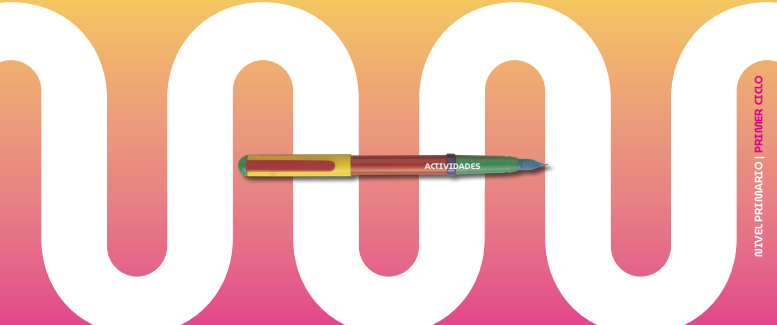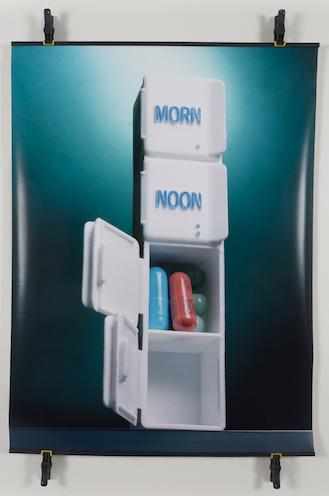A couple of hours apart, in Buenos Aires Province and Mexico City, Argentinian writer Gabriela Cabezón Cámara and artist Ana Gallardo talk about the ways that art can accompany processes of change and growth, and about Gallardo’s School of Aging project. The School of Aging was born in 2004. It has since worked to identify and make adult lives more visible by leading them as utopias or realizing them in gatherings, dialogues and collective actions that, as Cabezón Cámara points out, shatter moulds and create paradigms to help us live better.
Health has featured in the social, political and economic debate in recent months to an unprecedented degree, both nationally and globally. Behind the statistics and the numbers we read in daily reports are speculations around the future dynamics of the face-masks, social distancing and asepsis of our ‘new normal’. But the virus has also revealed that health is something far broader than the name of a disease. It raises awareness about the communities we live in: the larger body that contains us all and whose health we have to look after. The current circumstances remind us that health includes personal, family and community care: not just medical diagnoses but the need to share emotions, a sense of protection, contact with nature, a feeling of freedom, the practice of work and many other things besides. By understanding health like this in a broader sense – closer to a search for well-being, harmony and deep connection with our bodies, others and our environment, and for the amplification of our perceptions – different ‘care strategies’ emerge which many contemporary artists are investigating and make use of in their works.
In a movement back to the days when there were no differences between disciplines and knowledge travelled back and forth between art, science and spirituality, these artists have a comprehensive interest in the health of the mind and body in every condition and at every stage of life. Driven on by this idea, they propose spiritual journeys of meditation, devise palliative care projects where art is made by the patients themselves, or mental health group therapies that go beyond the physical body to imagine spaces for social contact, reclaiming old age as a vital stage of life where new horizons continue to open up. This set of works transcends the boundaries that have traditionally defined the ‘Work of Art’ to fuse completely with comprehensive health practices towards a new kind of well-being. Such works nurture self-discovery as the best conduit for promoting collective care and so contribute to the actual construction of a healthy, sustainable future. These artists and their works ask how we can strengthen our organisms not just physically and psychically, but emotionally and relationally. They therefore turn their attention to the exchanges encouraged by art rather than the objects it produces, reigniting the historical avant-gardes’ concern to alter at a single stroke the art we know and the social life that sustains it. This profile of contemporary art thus encompasses a broad idea of health and demands a transformative reading of the community we belong to.
By concentrating less on the biological certainties of modern science and more on the immeasurable wealth of sensitive approaches, art can go beyond the materiality of the body and try to remedy the ailments that undermine our health on various fronts. In the current context, when we are even more conscious of the complex regime of unhealth that reigns over inner and outer lives, we ask ourselves whether art and artistic strategies may provide a way, through innovative new profiles, to strengthen our fragile existence.
Nicolás Mastracchio ~. Destino [Destination], 2020, Video, 7′ 58″
In a work specially produced for the Museo de Arte Moderno during his quarantine in Berlin, Nicolás Mastracchio~ builds an atmosphere of transformation and shelter using images created with simple analogue materials (coloured acetates and glasses of water), his digital camera and music specially composed. The colours that study, mirror and evolve each other in cyclical movements suggest a duct, a conduit, a place of containment and energy.
We share on our website the publication made by the Museum of Modern Art in 2018 to accompany the Nicolás exhibition Mastracchio ~: Pulse. With a complete tour of the series of photographs that were seen in the exhibition, accompanied by a curatorial text by Javier Villa, in which he reflects from his conversations with the artist, and an essay in which the writer Osvaldo Baigorria stops at the mystical aspects of this production.
Pulso [Pulse] – ‘Recorrido 1’ [Route 1], 2020, Audio, 22′ 32″
After a meditation audio conducted by Nicolás Mastracchio~ as part of his exhibition Pulso at the Museo de Arte Moderno de Buenos Aires in 2018, the artist brings us a new guided visualization specially produced for this context. We recommend listening in a locked, dimly-lit room. Arrange yourself in a comfortable position that you can maintain throughout the audio. Avoid headphones so that any ambient or bodily sounds become part of the process.
The exhibition, Graciela Hasper: The Grammar of Colour, held at the Museo de Arte Moderno in 2013, presented a look around twenty years of Hasper’s painting to bring the public the key works of one of Argentina’s greatest living artists. This book set out to go beyond: in addition to the corpus of images of the paintings displayed in the Moderno’s galleries, it includes paintings not exhibited, as well as extra-pictorial works like watercolours, photographs, digital projects, atmospheres and public art projects. Alongside this important selection of images it offers a gateway into Hasper’s prolific visual world, accompanied by critical texts from Roberto Amigo and Laura Isola.
Draw Your Experience In this video the artist Catalina León creates a visual outline interrelating fundamental concepts that link art, health and education. Through her experience as co-founder and director of the NGO, Vergel, Catalina León conveys to us what she has learnt about the importance of artistic endeavour in building and preserving health and well-being.
Vergel is an NGO created in 2010 that brings together art, health and education, and puts artistic practices at the service of public health and well-being. Through implementing artistic programmes, training schemes, outreach actions and content development, Vergel promotes the importance of art as a complementary tool in medical treatments and works towards a humanized, holistic approach to health. In the current health emergency Vergel is accompanying patients at the Ricardo Gutiérrez Children’s Hospital and the José de San Martín Teaching Hospital via WhatsApp, and is currently working with Argentina’s Ministry of Culture on an idea for COVID patients.
In the production that made up the exhibition held at the Museum of Art Modern, Catalina León was inspired by the research of the anthropologist French Jean Duvignaud on ritual festivals and religiosity, in the describing “useless sacrifice” as a carefree action that it allows the self to detach itself from impositions and open itself to infinity. Today we share the publication made by the museum to accompany the intimate work of Catalina León, which includes a text by her curator, Alejandra Aguado, and fragments of a conversation between the two.
In one series of works Silvia Gurfein uses nuggets or chips of oil-paint recycled from her palette to build images in which explosion maps processes of change and transformation. In this video Gurfein discusses the relations between the practices of caring and painting, expanding on areas in her work where these become ways to get in touch with entropy and highlight our fragility and that of the world around us.
Based on film fragments exploring instructions about health, hospital regimes, physical training, hygiene and the use of physical violence, Marcelo Grosman investigates the link between the image and the domestication of the body.
The artist inscribes his researches within a ‘crossing of modernities’, where there is a convergence between the idea of Public Health, consolidated simultaneously to the industrial revolution, and the creation of industrial devices like the photographic camera, which has been responsible for the mass reproduction of the human image.

This first edition of Audio Obra [Audio Work] features Luis Felipe ‘Yuyo’ Noé
(an artist in the Museum’s collection), Pino Monkes (a Moderno conservator
and restorer), Andrea Mathov (a psychiatrist and coordinator of the Employment
with Support Programme), Fernanda Cermelli (a psychologist and member of
the Department of Inclusion with Mental Health). The Museo Moderno’s
Communities Area and the Mental Health Cultural Inclusion Programme of the
City of Buenos Aires are working to bring together health, art, thought and
creativity. The proposition aims to strengthen the ties between individuals, the
Museum and the city’s mental health facilities.

On this occasion, the Una Nube sound workshop and the Department of Education they propose an activity for the little ones. From toys and items from home we show you how you can create different sounds and melodies to stimulate children.
Shall we build a tower? Let no one say how it should be and that the error comes out magically different ways a swing where sound plays like imagination and create your own rules; Disassemble to reassemble!
Thus, between games, sounds and flights of the imagination, we propose to pass these days with the smallest of the house. Let this be an opportunity to strengthen ties. To build new towers.
Idea y música: Romina Péchin
Realización: Federico Juan Rubí y Romina Péchin